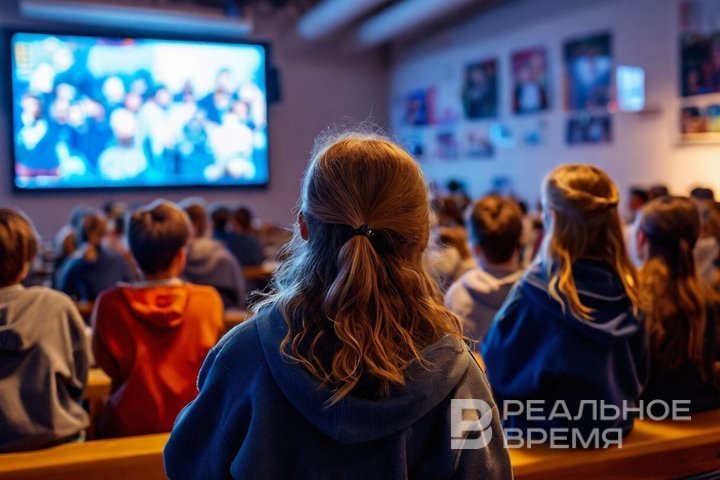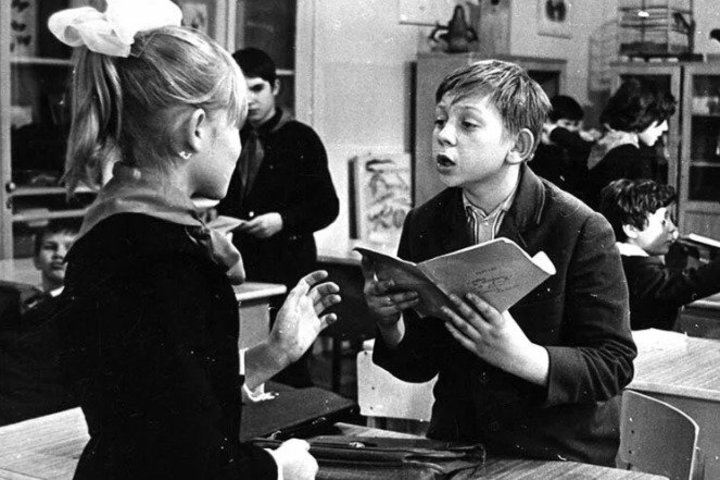‘It's more about a ‘must’ than ‘wish’’
A film critic, a teacher, and a school director talk about the introduction of mandatory Russian films in schools

In 2024, the Russian Ministry of Education once again drew attention to the importance of cinema in school education. Minister Sergey Kravtsov announced the preparation of a list of films that schoolchildren will watch after school. A film critic, a teacher, and a school director spoke about whether such a voluntary and at the same time compulsory approach will cause disgust for Russian classics, and how to find time in schoolchildren's busy schedules. Read more about it in a report of Realnoe Vremya.
“It would be great if it included more than just Soviet films”
The initiative came after President Vladimir Putin proposed to return the practice of holding literary concerts and lectures with actors to schools and colleges. Kravtsov emphasised that each school already has a school theatre, and now cinema will be added to it.

The idea of introducing a film education course in schools is not new. Back in 2013, director Nikita Mikhalkov proposed including a course in the curriculum that, along with literature lessons, would form aesthetic views in children. The Ministry of Culture even compiled a list of one hundred recommended films for schoolchildren.
However, the implementation of the idea faced many difficulties. Questions arose about the need for additional teachers, technical support, film distribution and financing. As a result, the film education course was never introduced in schools.

“Finding the time and place to watch movies can be difficult”
More than ten years later, Russia is once again talking about the importance of cultural education for schoolchildren. In September 2024, the Public Chamber of Russia presented a list of 191 films recommended by the Ministry of Education for showing in schools.
It mainly consists of Soviet films (181 films) and includes only 10 modern films. The films are divided into age categories, and only 20 films have been selected for younger students (grades 5-6). The most “recent” film in this category is The Bizarre from the Five B Class made in 1972.

The first category, in particular, includes the films The Elusive Avengers (1966), Timur and His Team (1940), The Adventures of Buratino (1975) and others, the second Man with a Movie Camera (1929), Battleship Potyomkin (1925), Ordinary Fascism(1965), Andrey Rublyov (1966).
Schoolchildren from the third category are offered to watch War and Peace (1965), Ilyich’s Outpost (1964), Belorussky Station (1971), Come and See (1985). Among modern films for high school students, only The Russian Riot (1999) based on the works of Alexander Pushkin was on the list.

But do children need this?
According to her, such an initiative is relevant because students “won't think of watching these films themselves.” The teacher always shows his 10th grade students Cruel Romance and Fathers and Sons. He admits that, as surprisingly, they watch with interest, even with “tears in their eyes.”
Film critic Adilya Khaybullina believes that it is difficult to assess how relevant this innovation is. In her opinion, school is a process in which children themselves should participate, and everything that is introduced from above does not always arouse their interest.
“It’s more about a ‘must’ than ‘wish,’ especially for schoolchildren,” she admits. However, Khaybullina admits that with the right approach, this can contribute to development. But if you approach this one-sidedly and with categorical tasks, the result can be not only a lack of benefit, but also a negative reaction, up to and including rejection.”